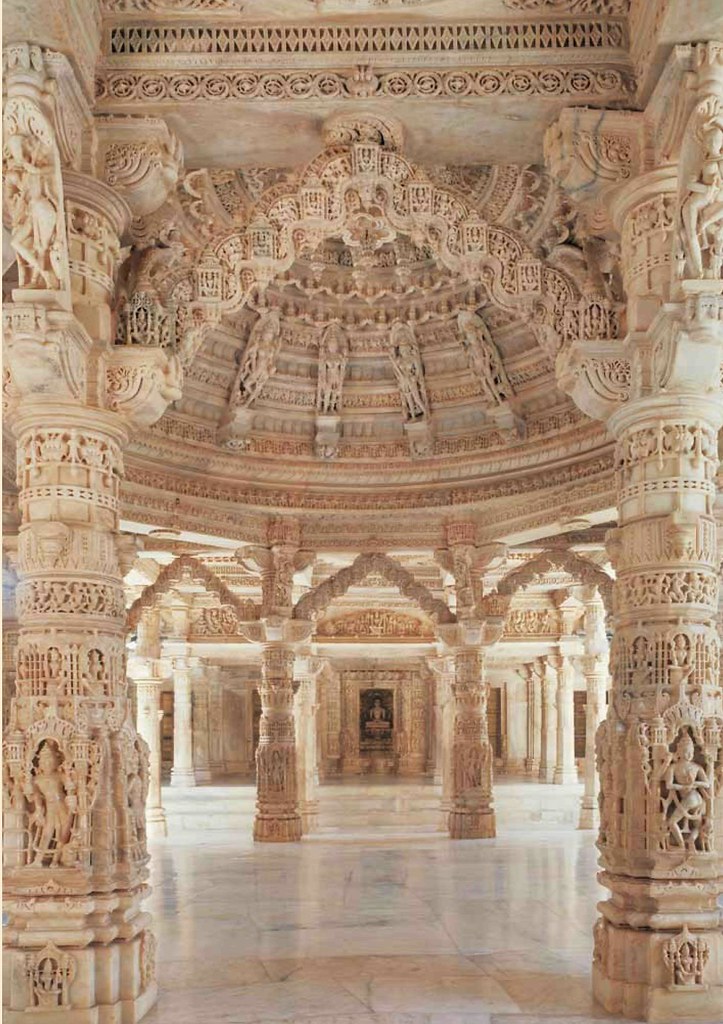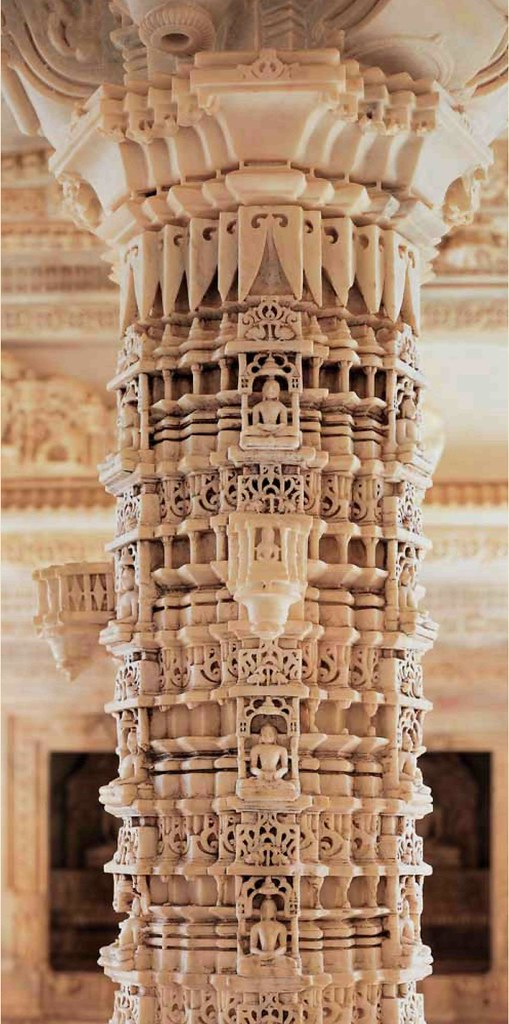 View through toranas surrounding the ranga-mandapa onto the Sanctum Sanctorum in Luna Vasahi /Tejapala Temple
View through toranas surrounding the ranga-mandapa onto the Sanctum Sanctorum in Luna Vasahi /Tejapala TempleAccurate historical information is not available on the early history of Mt. Abu only mythological. We learn of the Bhill’s and Nagas who according to legend, lived here in ancient times. The latter worshipped the Goddess Durga which points to the existence of a fertility cult, traces of which remain even in historic times. After this, we come across the names of the first kings. The first ruler, Dhumraja, established the Parmar dynasty in 961 AD. A few decades later, Mulraja Solanki of Gujarat extended his sway over this region. As a result, the architecture had great influence of Solanki style and the older Dilwara temples are an example of this. The rulers of this period preferred to employ Jain ministers and obey, with their legendary wealth, functioned as the founders of the temples.
 Pillar of the navchoki with meditating figures in Luna Vasahi / Tejapala Temple
Pillar of the navchoki with meditating figures in Luna Vasahi / Tejapala TempleThe conquest of Mt. Abu in 1311 by Rao Luniba of the Deora-Chauhan dynasty brought to an end the reign of the Parmars and marked the decline of Mount Abu. He shifted the capital city to Chandravati in the plains. After the destruction of Chandravati in 1405, Rao Sahasmal made Sirohi his headquarters.
Rana Kumbha, famous for buildings in Chittaurgarh and magnificent temples at Ranakpur, wished to establish a Rajput empire with Mewar at its heart. In the pursuit of this ambition, he immediately set about conquering Mt. Abu. Even if he was driven out of this area very soon, to him goes the credit of having erected the Achalgarh fortress that played an important role in the defence of Abu against the Muslim invaders who attempted to storm Mt. Abu. The rulers of Sirohi were on very good terms with the British who soon discovered the delights of Mt. Abu. They built a sanatorium here and very often, the English Residents spent the summer here in its salubrious climate. In 1917, the hill was entirely given over to the British and their imprint is visible on the architecture of the buildings surrounding Nakki Lake, splendid examples of colonial British building style. After Independence in 1947, the area restored to the rulers of Sirohi. However, since 1956, Mt. Abu has been a part ofthe State of Rajasthan. View from the ranga-mandapa of the Luna Vasahi (Tejapala) Temple onto the shrine left of the entrance to the Sanctum Sanctorum
View from the ranga-mandapa of the Luna Vasahi (Tejapala) Temple onto the shrine left of the entrance to the Sanctum Sanctorum